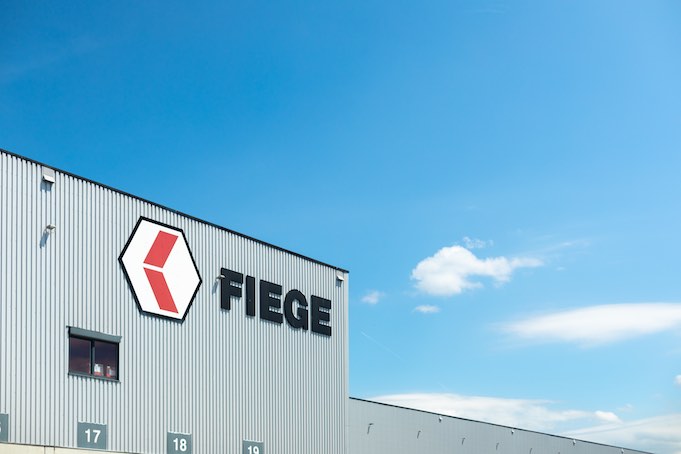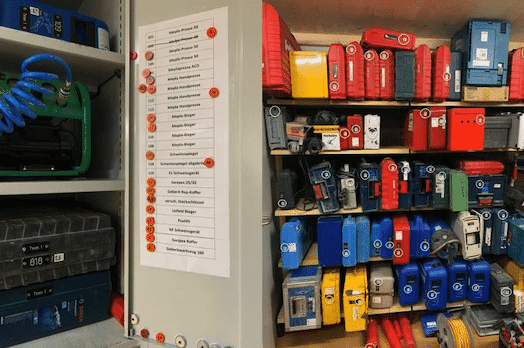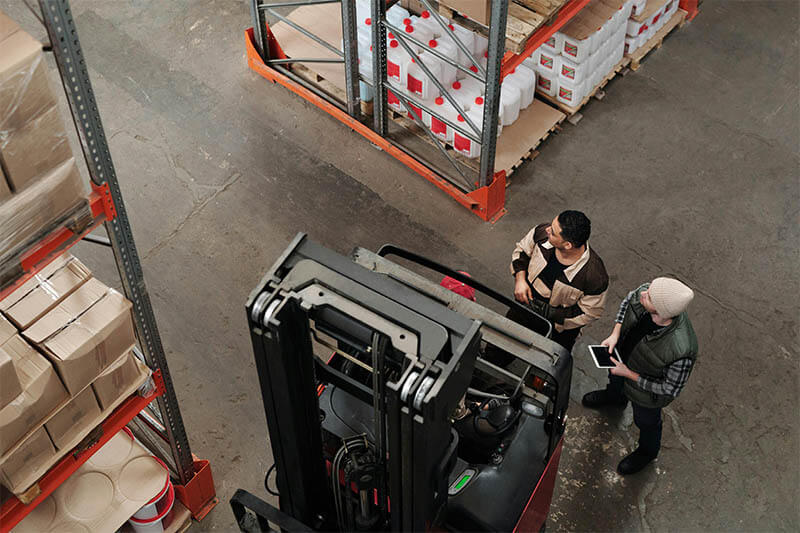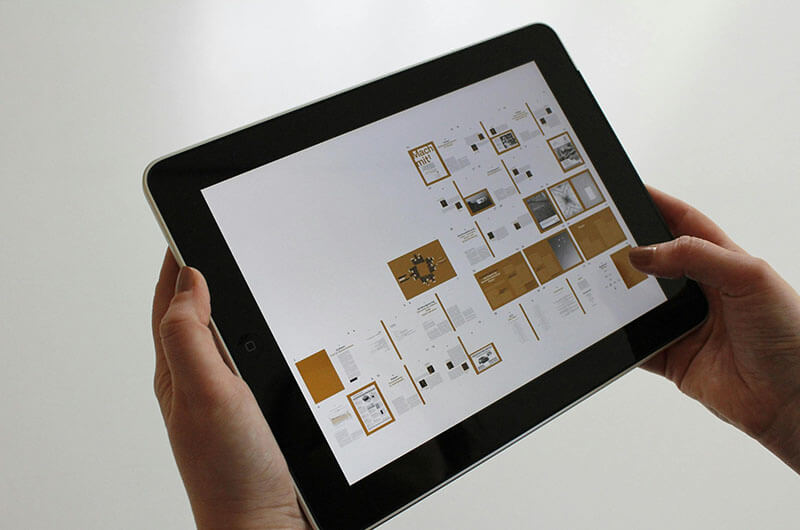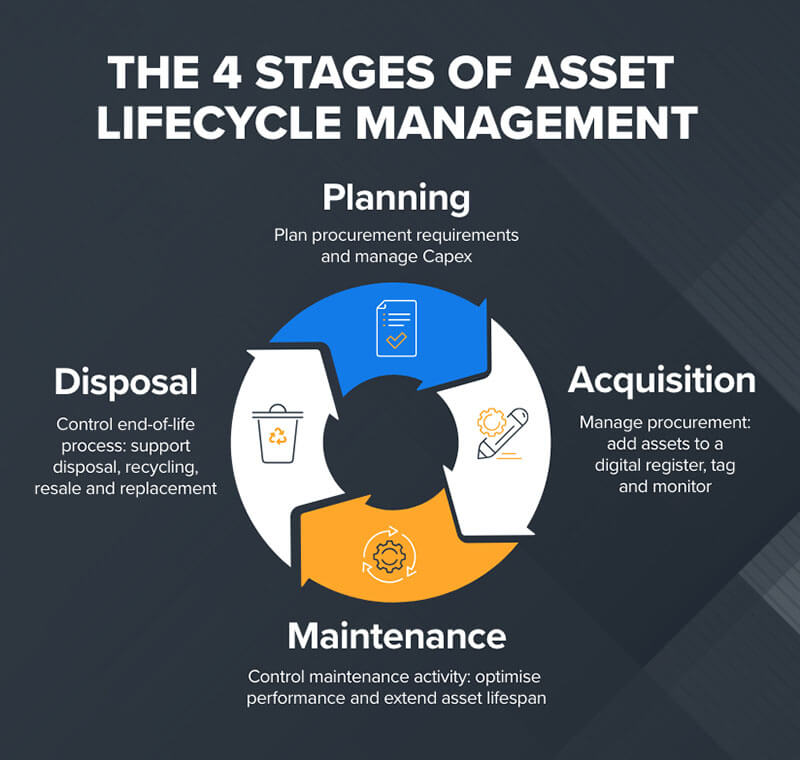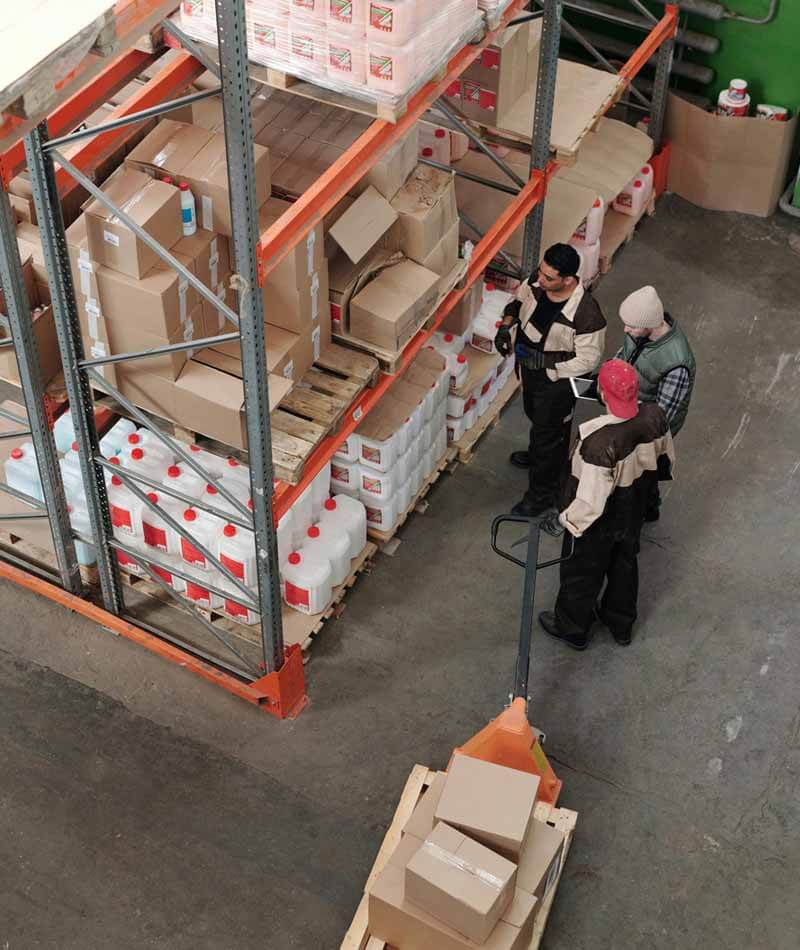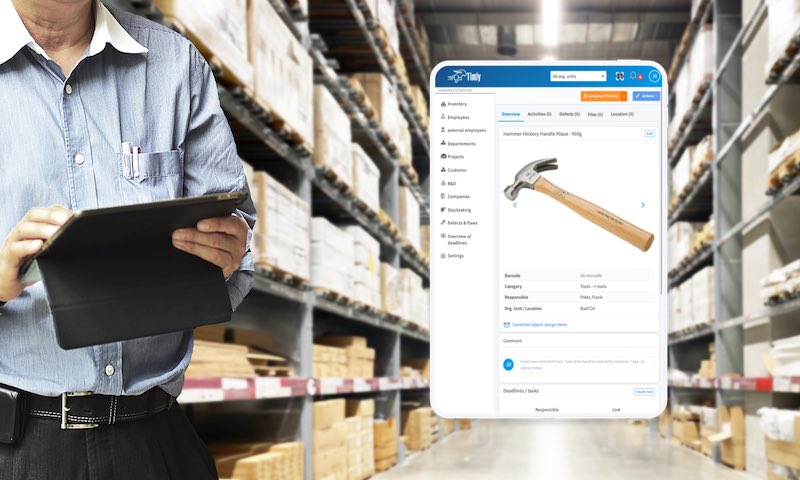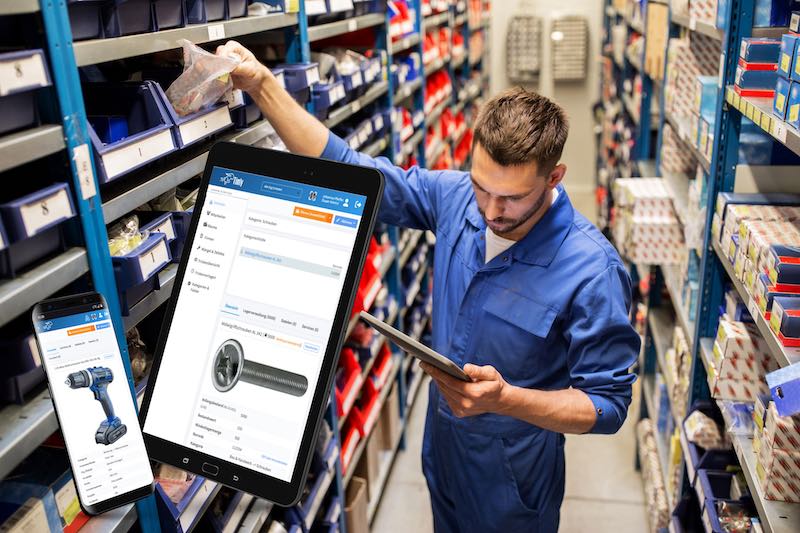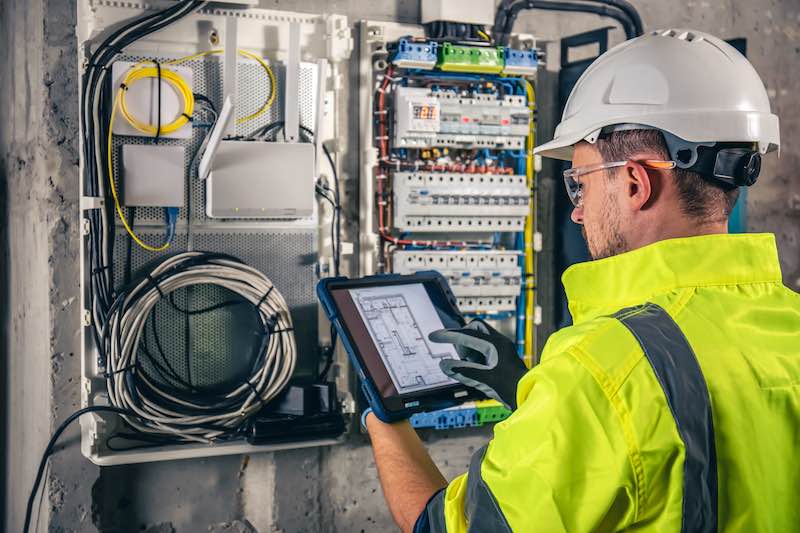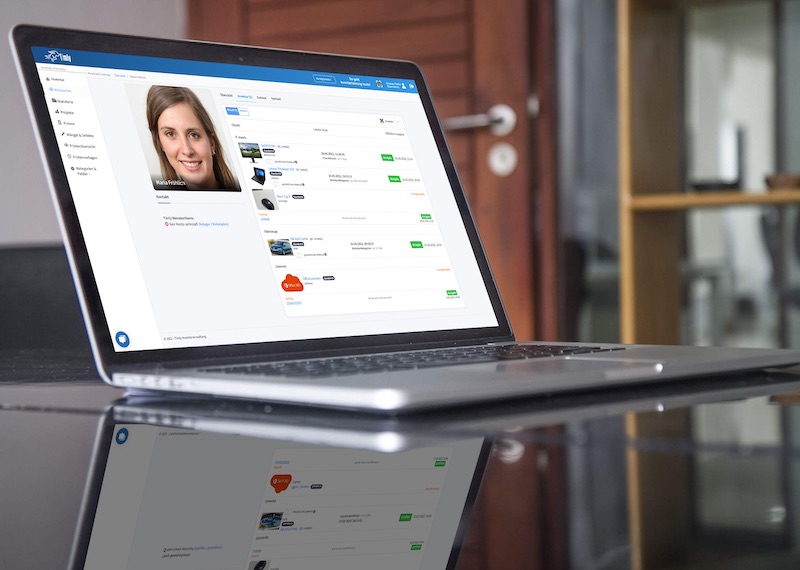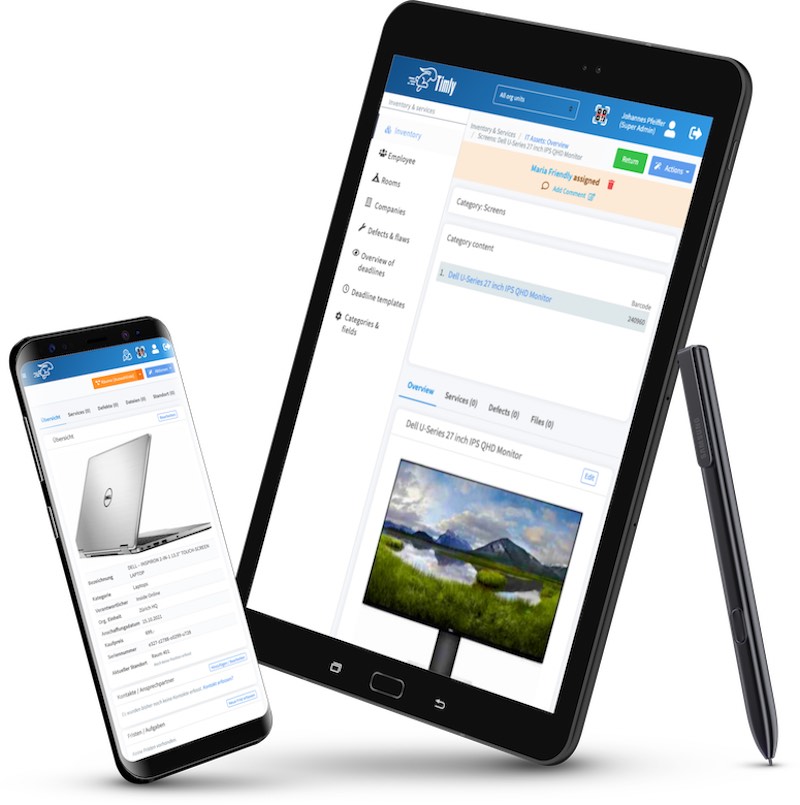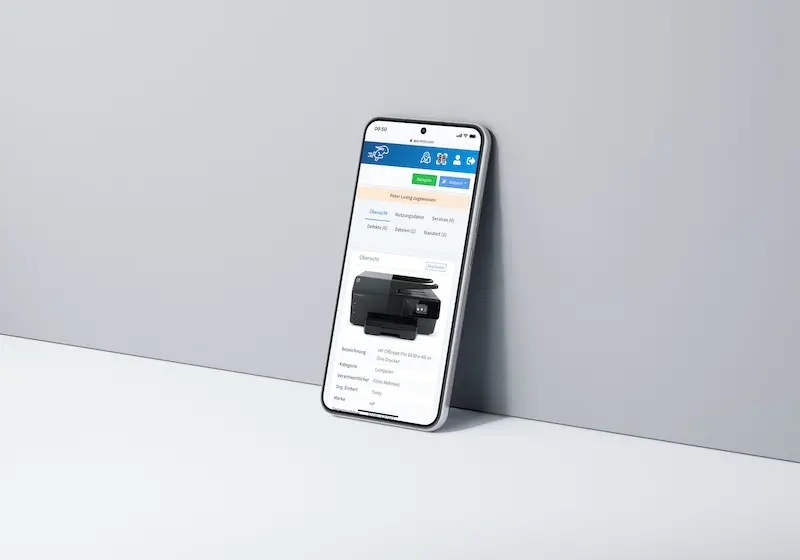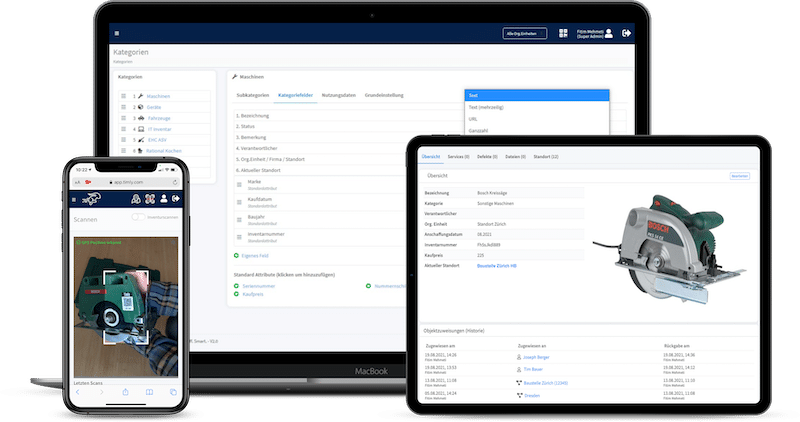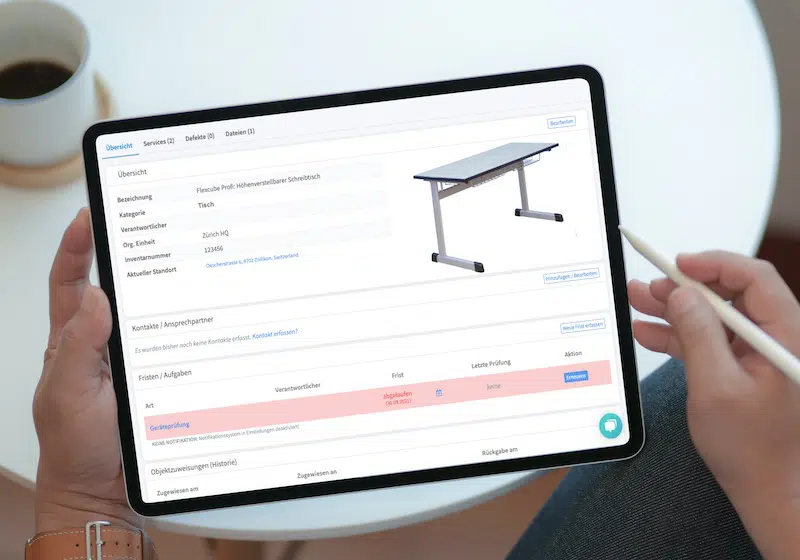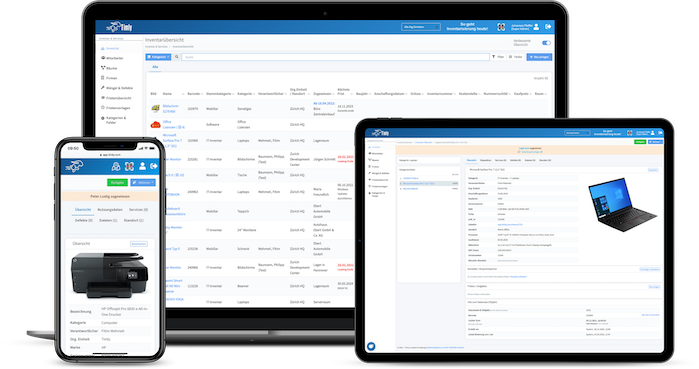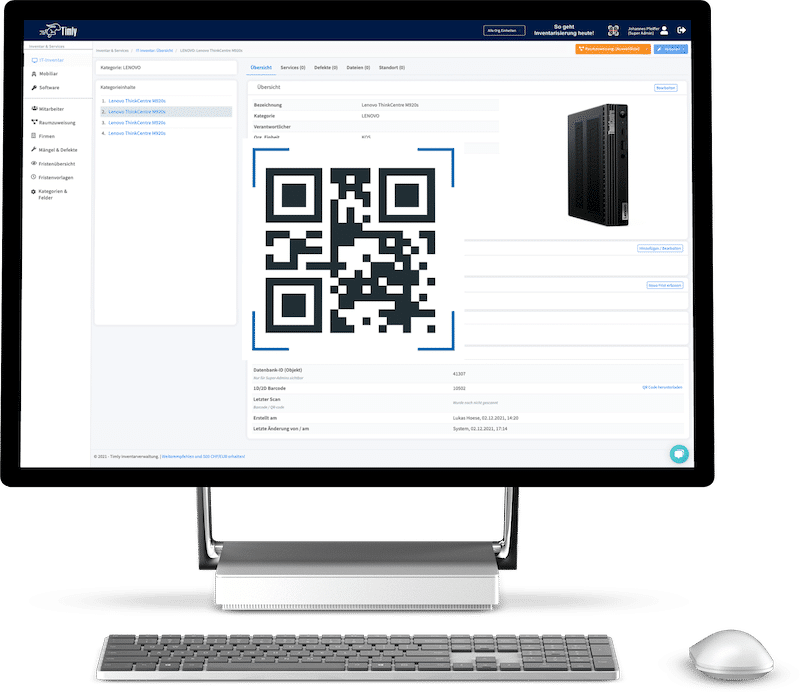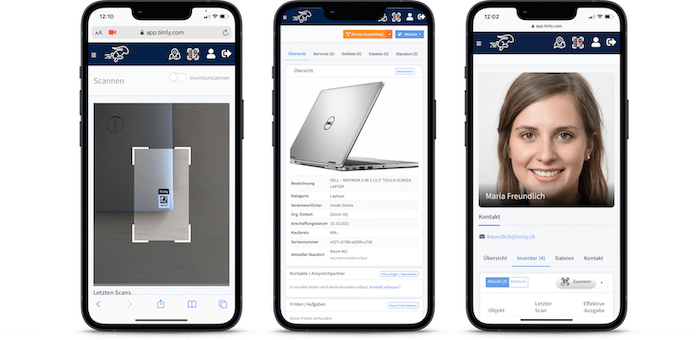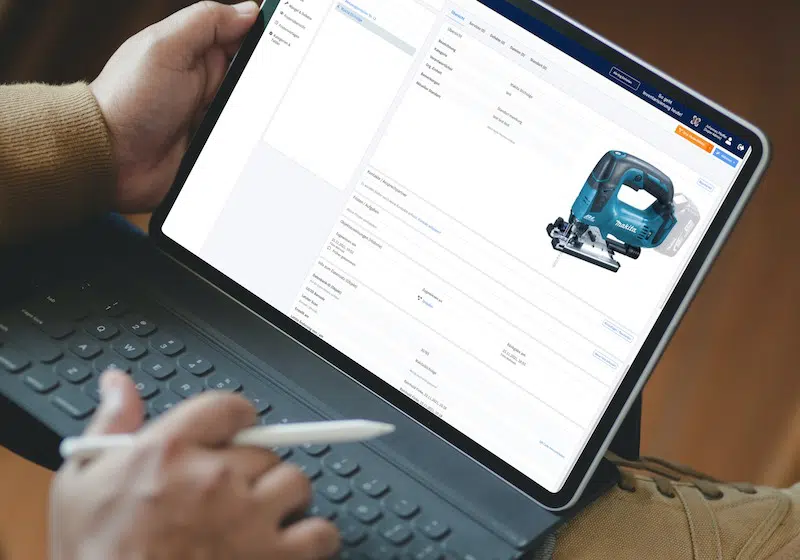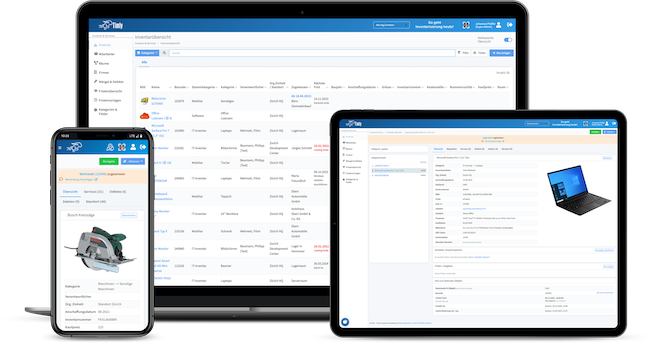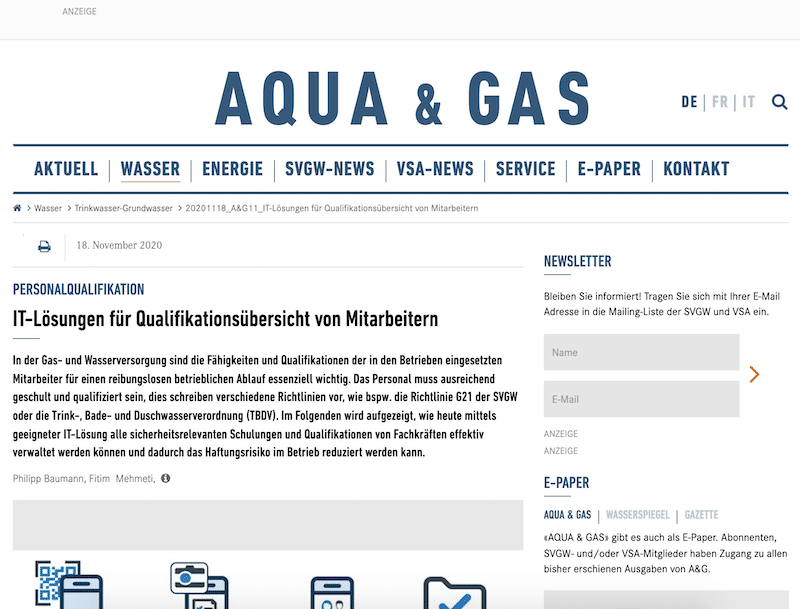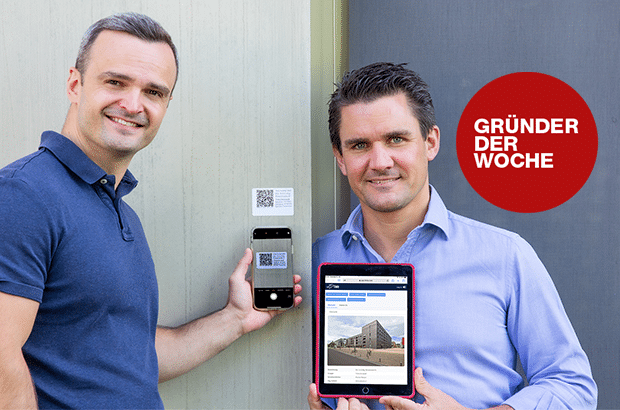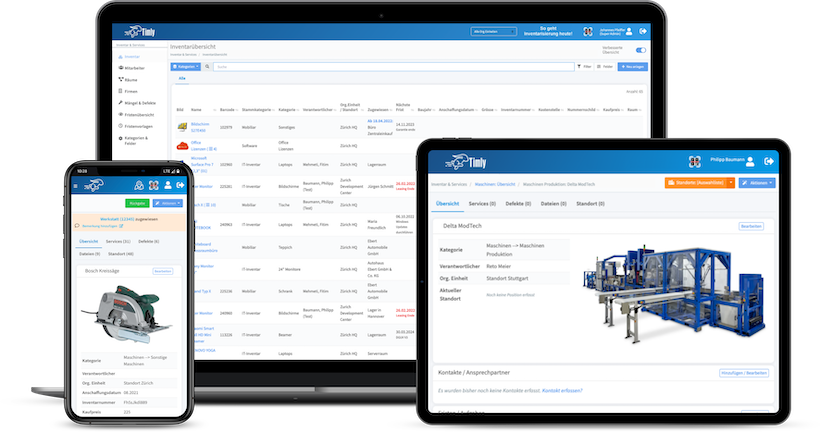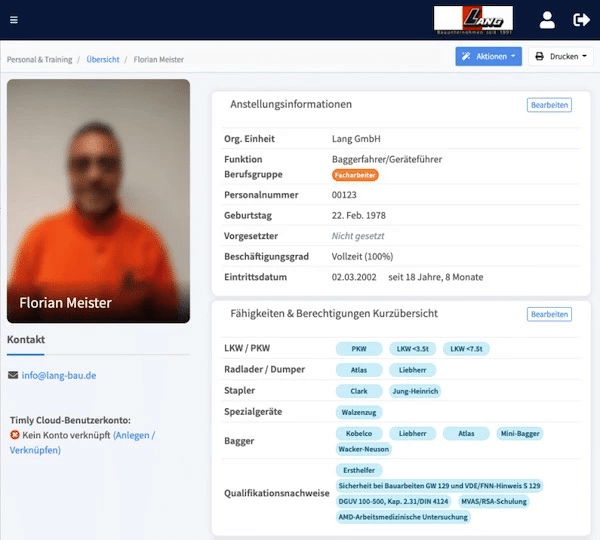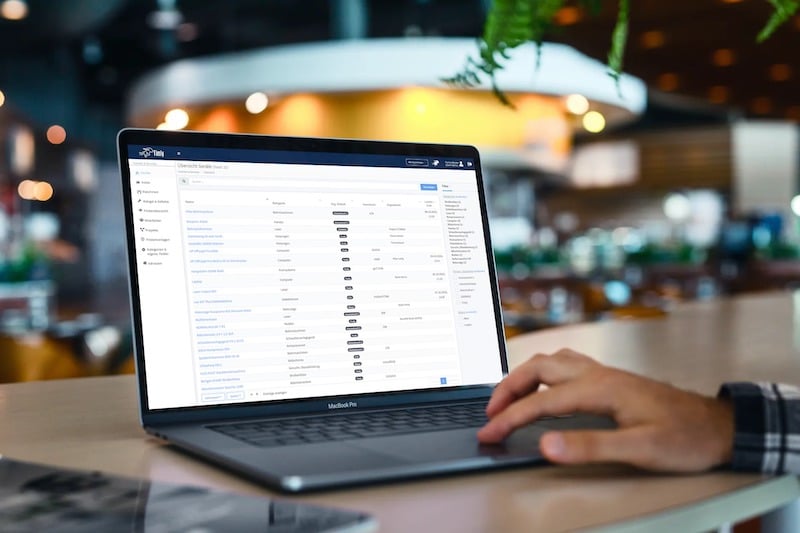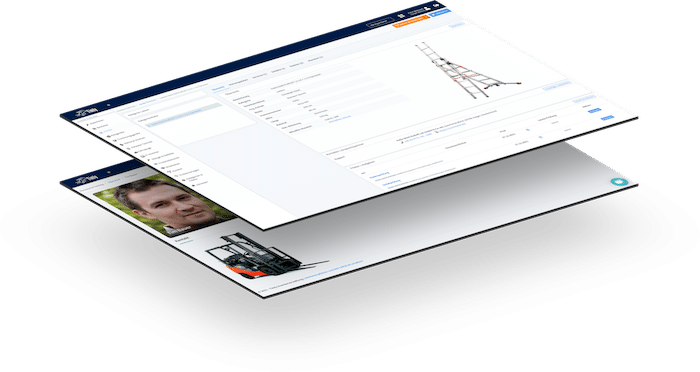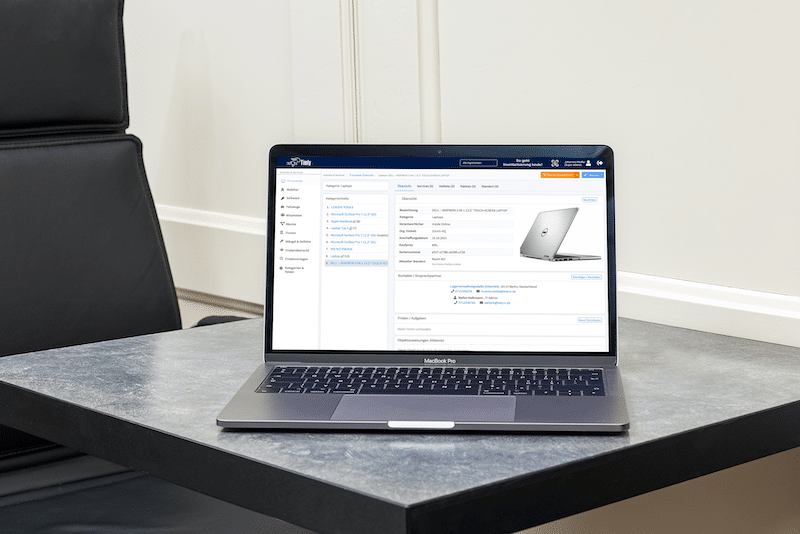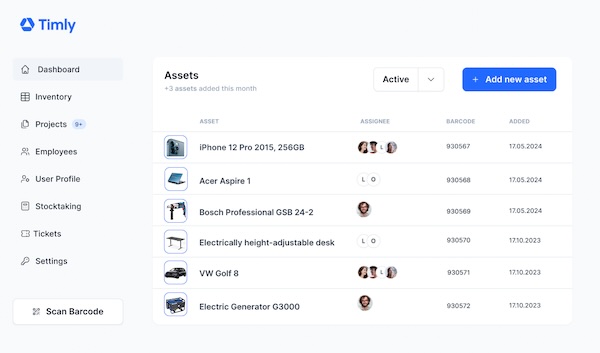
Key Takeaways:
-
RFID inventory management boosts efficiency and accuracy by automating real-time tracking and reducing manual errors.
-
RFID tags offer benefits like increased inventory visibility, improved theft prevention, and streamlined stock control.
-
Implementing RFID involves costs for hardware, software, and integration, but can offer significant ROI through improved efficiency and reduced losses.
In This Article:
- What Is RFID Inventory Management?
- How Does RFID Inventory Tracking Work?
- What Are the Benefits of RFID Inventory Tags?
- What Are the Costs Associated With RFID Inventory Management Systems?
- Asset Management Software in Use by Our Customers
- How Accurate Is the RFID Inventory Control System?
- What Are the Advantages of Using RFID for Stock Control?
- How Do RFID Inventory Systems Improve Security and Theft Prevention?
- What Are the Risks of Radio Frequency Identification Inventory Systems?
- Frequently Asked Questions About ‘RFID Inventory Management'
What Is RFID Inventory Management?
Radio Frequency Identification, or RFID, uses radio frequency to track and manage inventory in real-time. This tool helps businesses streamline processes, improve accuracy, and reduce costs.
RFID is divided into three basic components. They are:
Tags, also known as RFID labels or RFID smart labels, are small devices that have a microchip and an antenna and are tagged to the items being tracked. They use a unique identifier to track items like assets, products, or even containers.
RFID readers or RFID interrogators use radio waves to communicate with RFID tags, which are able to read and write data. There are two types of readers: fixed and mobile. Fixed readers are connected to a fixed area while mobile readers are moved around and used in different areas.
Software that is used to manage and collect information about RFID tags and readers. Retrieves, processes, and analyzes the information used to track inventory levels, monitor inventory management, and provide necessary reports.
How Can RFID Inventory Management Improve Operational Efficiency?
RFID inventory management improves operational efficiency by reducing human errors and increasing accuracy. This is because RFID helps track and monitor counts in real-time and helps reduce human error. It provides better inventory accuracy and helps reduce stockouts and overstocking issues.
The benefits of real-time tracking and visibility ensures that businesses are able to track and identify issues with discrepancies in their inventory, reducing stockouts and overstocking, and increasing the visibility of their supply chain.
RFID technology is able to integrate with current industry management software using a number of methods, such as seamless API integration, middleware solutions, or something called customized integration.
Moreover, by integrating with current inventory management software, businesses can ensure that their inventory tracking and management are automated, which helps to streamline operations, reduce human error, improve accuracy, and provide visibility of their inventory levels and movements.
How Does RFID Inventory Tracking Work?
RFID tracking works by using tags that are connected to items, which are then read by the RFID readers. It sends real-time updates to the database and provides an accurate and efficient means to track inventory, reduce manual discrepancies, and enhance productivity.
The data flow and management process focuses on collecting data from the tags that were sent to the software application’s database. Data processing then takes the known data, processes it, updates the inventory level, and tracks the product. As for data storage, it is where data is located for future information retrieval or analysis. Users are able to retrieve data from the database or application by using the appropriate access given.
RFID provides real-time inventory updates and inventory status by using real-time tracking, which helps businesses track products and adjust their inventory, identify stock levels and product locations, automate inventory, and provide the opportunity to make decisions that help improve their overall supply chain management.
Examples of Using RFID Technology to Track Inventory
RFID has changed the way technology is used in a myriad of industries and has helped to provide visibility, accuracy and efficiency in real-time. Let us look at some of the examples of using RFID technology to track inventory:
Retail Industry:
The retail industry uses RFID to ensure that their inventory is well-tracked, providing real-time purchasing information, product tracking, management workflows, and data analytics of their sales.
Healthcare Industry:
The healthcare industry uses RFID to track their equipment, prescriptions, supplies, and risk of medication errors, and ensure that their inventory is well-managed.
Manufacturing Industry:
The manufacturing industry uses RFID to track components, vehicles, and aircraft parts, which allows inventory to be accurately stocked, reducing any means of downtime in production.
Over 600 Companies, Schools and Cities Rely on Timly
(No credit card required)
RFID inventory tags provide a number of benefits that can change how inventory is managed. Let us look at some of its importance:
RFID is able to increase the inventory’s data collection processing rate as the tracking and monitoring processes are automated. Thus, with RFID tags, you can scan multiple items at once, reduce the risk of manual entry, and obtain updates on the inventory level in real-time. It also helps to reduce the necessity for manual labor by removing the need to count and track so that staff can focus on other important tasks and reduce the cost of labor. RFID can also help to detect inventory levels, help prevent theft, encrypt data, and provide individual item tracking, which helps in the recovery of items or lost products.

What Is the Lifespan and Range of RFID Tags?
The lifespan and range of RFID tags depend on a few factors, such as the environment, usage, and type of tag. Let us look at some tag examples:
- Passive RFID tags can last about 10 years or longer. However, if exposed to high temperatures, physical damage, or harsh chemicals, the lifespan of the tag will be reduced. The operational range of these tags can Ωrange 1 meter to up to 10 meters.
- Active RFID tags offer reliable battery life, typically lasting from a few months to several years. The operational range of these tags can be up to 100 meters or more.
- Custom designed tags can last for many years under harsh conditions, such as extreme weathe or other conditions that can lead to wear and tear.
There are a few environmental factors such as temperature, humidity, and chemical exposure and operational factors such as transmission frequency, antenna design and tag orientation that can impact RFID tag performance.
What Are the Costs Associated With RFID Inventory Management Systems?
The costs associated with RFID inventory management systems can vary widely based on several factors, not least the complexity of inventory management software features. Key things to consider when evaluating costs:
Hardware: This includes RFID tags, antennas, and readers.
Software: Inventory management software costs.
Implementation: Expenses for configuring, testing, and deploying the system.
Infrastructure: Costs for necessary infrastructure such as power connections and network setup.
The cost of tags and RFID tags varies by size and frequency. Let us look at the ranges of tags, readers, and antennas per item.
- Passive tags can range from USD 0.10 to USD 1.50
- Active RFID can range from USD 15 to USD 20
- Readers can range from USD 500 to USD 10,000
- Antennas can range from USD to USD 1000
As for the cost of RFID inventory management software, it would depend on the system and the number per user. Here are some of the software prices per year:
- Basic can range from USD 500 to USD 5,000
- Advanced can range from USD 5,000 to USD 50,000
- Enterprise can range from 50,000 to USD 500,000.
By using Timly’s RFID technology, businesses can accurately track the last known location of their items. Implementing such software not only improves accuracy and efficiency but also reduces shrinkage while providing a comprehensive view of the overall supply chain.
Asset Management Software in Use by Our Customers
The Timly software is continuously evolving to meet the needs of our customers. In various success stories, we show you how Timly optimizes processes in companies, thereby saving significant effort. With Timly, inventory management becomes child’s play.

Optimized Device Management With Innovative Self-Inventory
SodaStream is the world market leader for water sparkling systems for domestic use and has a lot of IT equipment at its various locations. Many colleagues now work from their home offices. A digital solution for the efficient management of IT end devices became necessary...
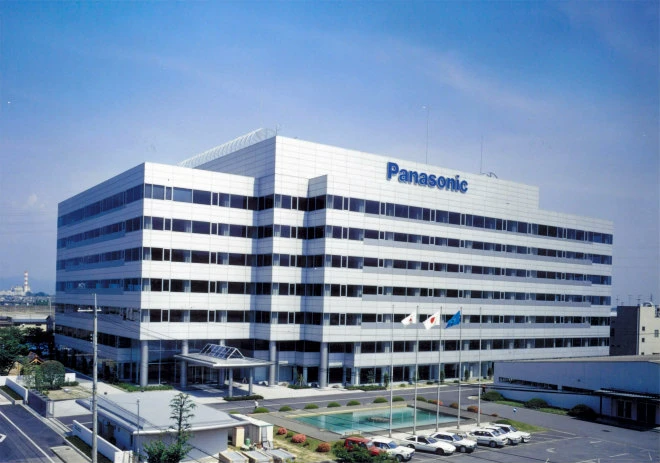
Panasonic x Timly: Driving Technological Innovation
One of the most remarkable aspects of human ingenuity is our ability to innovate. Innovation is embedded in the DNA of consumer electronics giant Panasonic, which has diversified into a number of sectors, from heavy industry to construction...
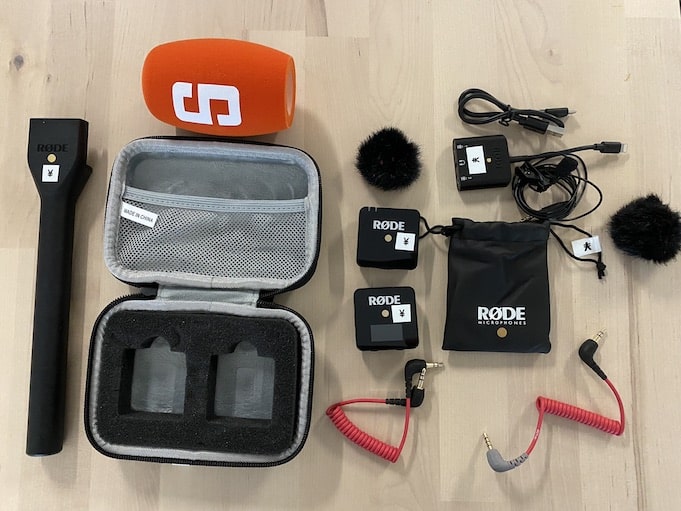
Manage Video Equipment Efficiently Without Much Effort
The Hamburg media company always does outstanding journalistic work and is characterized by independent reporting. In order to maintain journalistic quality, the teams work with highly specialized devices – these need to be managed efficiently...

Smart City Asset Management – Timly in Use at DIGOOH
The core business of DIGOOH Media GmbH in Cologne is to manage digital city light posters (DCLP) for outdoor use in various cities in Germany. The challenge here lies in making the client’s communication message always available at the right time, in the right place...
(No credit card required)
How Accurate Is the RFID Inventory Control System?
RFID technology systems are known to improve accuracy by reducing errors and increasing efficiency. It is known that RFID can improve accuracy by about 13% compared to using a normal inventory and tracking method.
RFID minimizes errors compared to manual and barcode systems by replacing manual collection with automated collection, generates real-time updates and corrections, and provides better accuracy compared to barcodes. This is because barcodes are easily damaged, misread, or may provide errors.
What Are the Advantages of Using RFID for Stock Control?
The advantages of using RFID for stock control are that it is able to:
- Automate tasks such as counting, inventory assignment, return, and transfer, and shipment which helps boost speed and efficiency.
- RFID technology automates inventory tracking and counting, eliminating the need for time-consuming manual processes. This streamlined approach can reduce distribution center costs by 50-80%.
You have visibility into your inventory levels, which allows for better tracking and management of assets. This helps improve stock control by providing better stock rotation, accuracy, and reduced stockouts.
By using RFID, businesses get better inventory accuracy, which helps to enhance customer satisfaction. That is, customers can receive the items that they require whenever they require them, thus, increasing loyalty and return on investment (ROI).
How Do RFID Inventory Systems Improve Security and Theft Prevention?
RFID inventory systems improve security and theft prevention through monitoring, tracking, and providing the ability to navigate through any unwanted theft quickly and efficiently.
Let’s see how RFID improves security and theft prevention:
- They help track and prevent theft by using RFID tags that are tied to the assets. This is done by utilizing designed tags to detect tampering or removal of assets, and ensuring that data is stored securely so that there is no unwanted access to data.
- RFID plays a crucial role in enhanced monitoring by detecting high-value items. This helps reduce the number of inventory discrepancies and improve the accuracy of inventory management.
- As for security protocols, RFID systems can provide security and integrity through encrypted data, which assists to prevent unauthorized access, access control that helps to stop unwanted access, and securely transmitting information without any form of interception or tampering.
RFID technology is particularly effective in certain industries, including:
- Retail Industry:
RFID technology has been revolutionary in combating retail theft and loss. This is done by tracking items, thus, leading to a huge reduction in losses and overall inventory accuracy. - Healthcare Industry:
In the healthcare industry, RFID has been utilized to track and monitor medical assets such as equipment and supplies. By introducing RFID, it has led to a significant decrease in theft and loss, thus, ensuring critical resources are readily available for patient care.
What Are the Risks of Radio Frequency Identification Inventory Systems?
A few risks are tied to RFID systems, such as cost, technical challenges, privacy, and environmental issues. The risk is that implementing such systems requires high costs. This is an issue for startups and small businesses because staff need complex and niche understanding to install RFID systems. However, the problem is that RFID signals may get interrupted by using metal, water, and other signal-interfering devices, which reduces the system’s accuracy.
Moreover, there would be technical issues if there were other RFID tags around. These tags would interfere with other RFID tags and thus, interrupt the signals. Therefore, businesses will receive incorrect information due to tags and data being corrupted.
Another factor is privacy and security because the technology works by collecting sensitive information about people, products, and inventory. The issue that arises from this is the possibility of data being hacked through unauthorized access such as cloning RFID tags or other vulnerabilities, raising concerns about data security and individual privacy.
RFID tags may pose a threat by emitting radio frequencies that may harm both people and the environment. To add on, generating more tags will create huge amounts of energy and add to electronic waste.
Frequently Asked Questions About ‘RFID Inventory Management’
What Is RFID Inventory Management?
What Are the Benefits of RFID Inventory Tags?
Recommended for You:
Book an online demo - free and without obligation - or create your free trial account directly.











